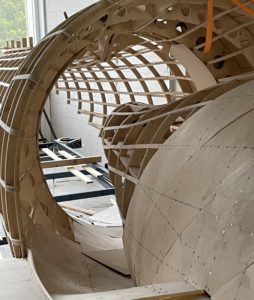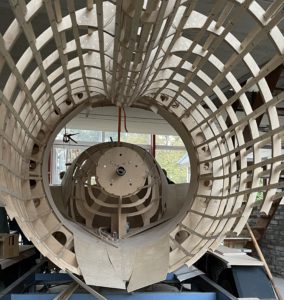
Cormorant
CORMORANT
Wood – the original & sustainable composite material


We receive many questions from professionals in the aviation business and other visitors as to why we are building our current Proof of Concept aircraft from wood.
To begin with, wood was amongst the first materials used to design and construct aircraft. Many famous aircraft, like the de Havilland Mosquito, Tiger Moth or the largest aircraft ever built, the Hughes H-4 Hercules strategic airlift flying boat, were built of wood, mainly combinations of spruce, birch plywood and balsa. Wood is a relatively lightweight, strong and durable material, has no fatigue and, last but not least, it is relatively inexpensive to use.
As for our current prototype, there were two factors that were decisive in using wood as its preferred construction material:
- Cost – to date our project has been financed using our own money and time. Ease of availability and low cost of raw materials are paramount concerns in such circumstances.
- Workability – we required a material that was relatively easy to work with and manipulate so as to complete the design and to derive detailed, meaningful information from it.
Results will be limited to ground- and water-testing of the structure together with aerodynamic analysis of the propulsive unit’s geometry, all of which can be completed without the requirement to fly. In addition, the model will be used to complete Cormorant’s interior ergonomics, whist also enabling it to be used as a static display model at aviation trade events. This explains why the aircraft can be accommodated on a road-going trailer.
Like its illustrious, abovementioned predecessors, our aircraft prototype is constructed mainly from aircraft grade birch plywood and some Sitka spruce (‘clear and better’ graded). This applies for the airframe (frames and stringers) together with the outer, and part of the inner, skin. This structural set-up is no different to any other (aluminum) aircraft. Also, the prototype’s wings will be made from the same sandwiched, composite, wooden materials.
Once the prototype’s airframe is completed it will be fully covered with a layer of glass- and carbon-fiber, making it both strong and watertight. A final paintjob, including striping and lining, will complete the aircraft as such, leaving the interior to be experienced and enjoyed by professionals, potential operators and customers, together with interested members of the general public.
Share this: